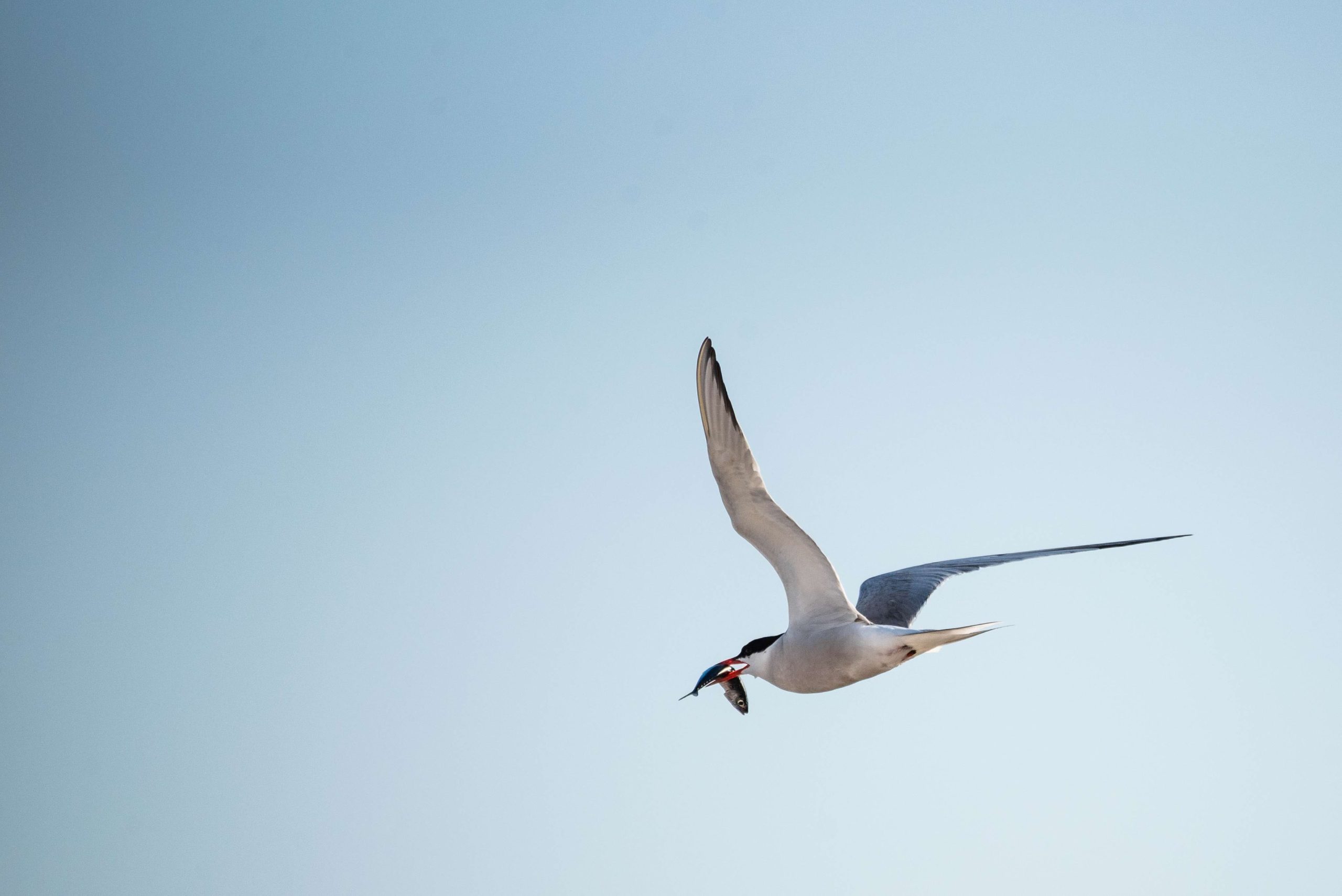

Images courtesy of Tim Briggs.
To study the movements of these predators, tracking tags (GPS technology for terns, acoustic technology for Atlantic cod) are used to follow their movements. We will also examine their diet, by analyzing gut contents from Atlantic cod (both visually and via genomic methods) and terns (via genomics of fecal samples). The availability of forage species (including river herring, Atlantic herring, and squid) can be quantified through tracking, active acoustics, passive acoustics, and eDNA of water samples. Information on animal movements and diet can be integrated with a variety of environmental conditions from oceanographic buoys, other sensors, and ocean simulation models. Mathematical models are used to predict how changes in water temperature and diet will affect Atlantic cod and terns. Comparing and contrasting species’ responses to environmental change helps determine the “winners and losers” of climate change. All efforts each year are informed by a variety of stakeholders representing resource managers and non-profit organizations. The Coastal New England team also includes experts in data management and accessibility to ensure data are accessible in a timely manner.
Collectively, these results demonstrate the value in novel technologies in tracking shifts in biodiversity across space and time. This project’s efforts build on the known strengths of each method (eDNA, diet analyses, active acoustics, and passive acoustics) while also exploring their integration and defining scales of appropriate use. Definitions of how each method describes marine biodiversity in both unique but also shared ways are explored. This knowledge allows stakeholders to integrate these methods into their own efforts, aiding research and monitoring. Marine ecosystems are dynamic, and this project’s approach determines at which scales ecosystem components change, and which methods best detect such variation. Broadly, results demonstrate the relative importance of environmental conditions and food availability on marine communities to promote proper conservation and management in a rapidly changing Gulf of Maine. The project engages a variety of stakeholders, including New Hampshire Fish and Game Department, National Marine Fisheries Service, Maine Department of Marine Resources, National Audubon Society, and the Piscataqua Region Estuarine Partnership.
